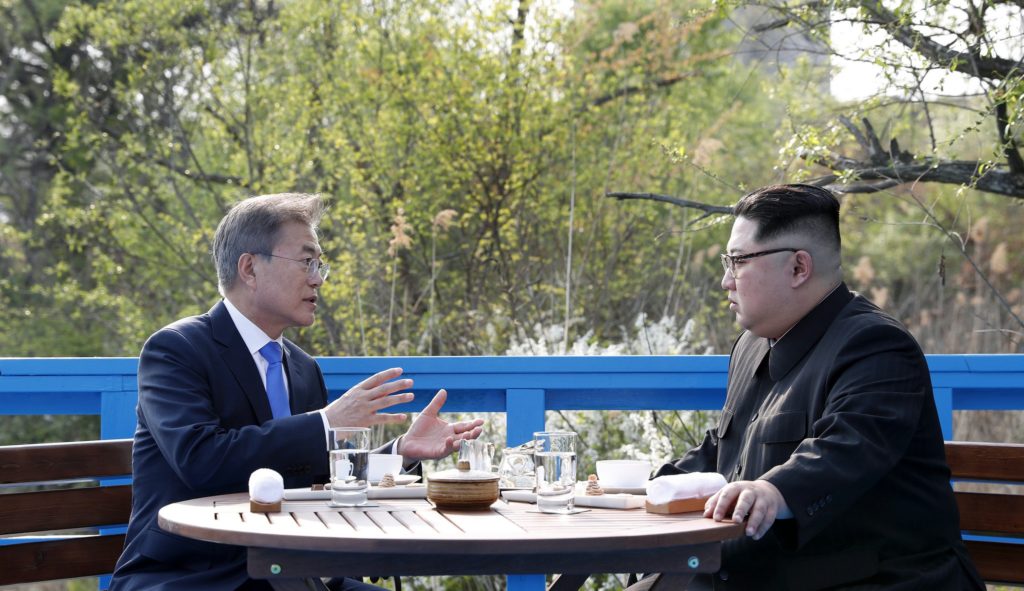The Peninsula
The Koreas, Together Alone
Published December 2, 2019
Category: North Korea, South Korea

By Andray Abrahamian
It is difficult to recall a moment where the two Koreas were simultaneously more isolated from the other countries of the region. What does this mean for the coming years?
For both, relations with China have been tricky in recent years. Beijing, has after all sanctioned both Koreas since 2017. When Seoul installed the American THAAD anti-missile defense system in mid-2017, Beijing sanctioned several Korean companies and sectors. This was executed informally and was thus deniable, such as the unofficial ban on group travel to South Korea: no public edict was given and news agencies only learned of it through leaks or comments by Chinese tour operators. Seoul made some commitments to Beijing in October of that year, but 2017 was difficult.
North Korea was meanwhile also subject to several rounds of UN sanctions in 2016 and 2017, as they pursued a robust schedule of nuclear and missile testing. This included punishing sectoral sanctions that covered all of the DPRK’s major exports, including laborers abroad, textiles, seafood, coal, and other extractives. China signed on to all of these, exacerbating the sense of mistrust Pyongyang has regarding its huge neighbor.
Since then, Kim Jong-un and Xi Jinping have managed to have five (five!) summits and clearly some sort of cooperative agreement has been put in place, even if the details are unknown. Still, after years of tensions, bilateral relations remain tense. North Koreans have distrusted the Chinese for decades and more than generally assumed by many observers. A handful of summits hasn’t erased this. Moreover, the huge increase in Chinese tourism to North Korea – something of an economic lifeline that has developed in the past year – has to give Kim Jong-un pause: he saw how Beijing choked off tourism to the other Korea. (It has also happened with Taiwan and Palau, to varying degrees.)
The quixotic leadership of Donald Trump has opened new opportunities and created new challenges for both Koreas, also. He has heaped pressure on South Korea through forcing a renegotiation of the 2012 Korea-US Free Trade Agreement, while slapping tariffs on some exports. This year, he has demanded a five-fold increase in the cost that Seoul pays for stationing U.S. troops in Korea.
Meanwhile, from the North Korean perspective, Trump has failed to come up with a new kind of solution to the post-Hanoi doldrums, even though Pyongyang’s own decision-making bears much responsibility for the lack of progress this year. Still, it seems as if Kim Jong-un has concluded that Trump has gone from wanting a deal to being disinterested. If the door to dialogue is currently barely open, Kim’s suggestion that he will go “a new way” in 2020 will probably see it slammed shut.
Japan is more irrelevant to North Korea than ever. Once the DPRK’s largest trading partner, interactions are now minimal. Shinzo Abe is the only leader in the region not to have had a summit with Kim Jong-un, so little is there to discuss, apparently.
Following South Korea’s 2018 Supreme Court order that two Japanese companies must compensate 14 forced labor victims for unpaid work during World War II and the Moon Administration’s dissolution of a foundation for “comfort women” under a 2015 agreement, Japan started a trade war. By taking South Korea off a trading white list, Tokyo threatened inputs into Korea’s semiconductor industry. South Korea responded with a consumer boycott and its own whitelist removal.
Crucially, Seoul also announced it was leaving GSOMIA, an intelligence sharing agreement brokered by Washington. Seoul has just postponed that decision after U.S. pressure in the past few weeks. This must also feel to Seoul as if it has less sway with the Americans than Tokyo has.
As for Russia, it will continue to take a backseat in the region. Moscow will not be a decisive economic or political player for either Korea.
This is a moment for extreme uncertainty for both Pyongyang and Seoul. If President Trump is in power another five years, one suspects Seoul might be inclined to pursue greater autonomy and move further from the United States. Yet rushing into the arms of China is hardly appealing. Rapprochement with Japan in the coming years seems unlikely: the South Korean body-politic is moving towards a fundamental reshaping of Japan-Korea relations, moving beyond the 1965 treaty that has hitherto defined bilateral ties.
For North Korea, whatever arrangement they have with China will allow for continued survival, but absent a breakthrough with the United States, economic growth will be limited. Major Chinese companies will stay away from North Korea so long as secondary sanctions risks remain. Russian investment and trade will remain small.
Inter-Korean relations will also deteriorate: even if Seoul’s trust in and dependence on the United States for security is gradually reduced, domestic politics and the structure of inter-Korean competition will remain huge fetters on how much the two Koreas could turn to each other. In the near term, Moon’s outreach will appear invalidated in domestic politics.
The extent to which uncertainty in Northeast Asia persists is partly related to how long Trump is in office, though not entirely. Regardless, both Koreas will find themselves navigating waters even more lonely and ambiguous than ever.
Andray Abrahamian is a Non-Resident Fellow at the Korea Economic Institute and Visiting Scholar at George Mason University Korea and Senior Adjunct Fellow at Pacific Forum. The views expressed here are the author’s alone.
Photo from the Republic of Korea’s photostream on flickr Creative Commons.
